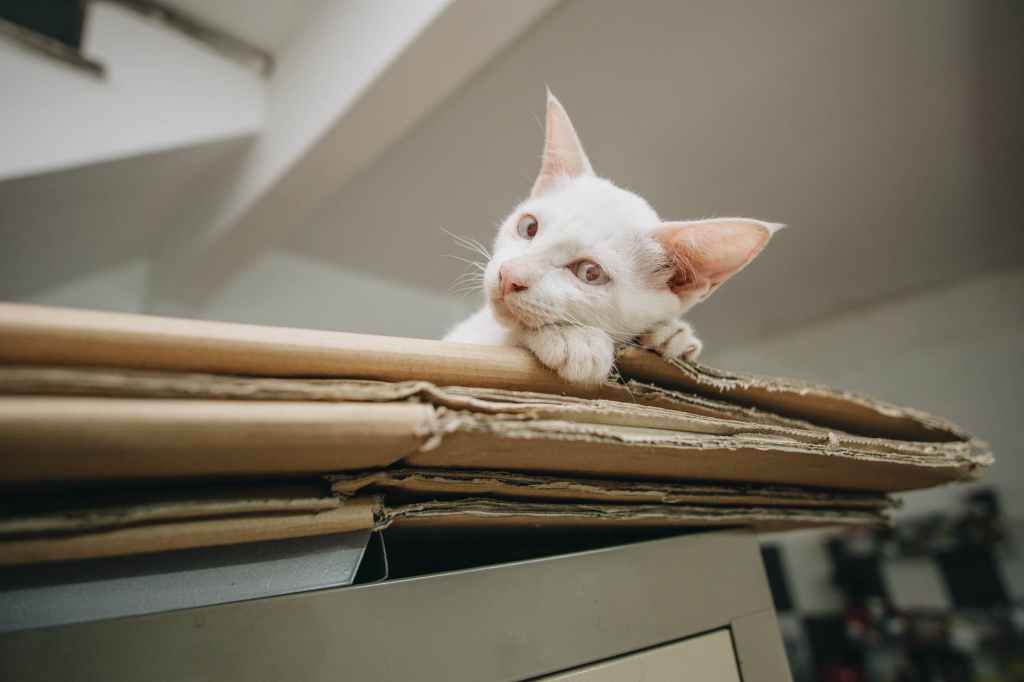Moving houses is stressful. There are so many things to organize and plan and it can sometimes feel like too much. That being said, at least we’re aware of what’s happening.
Cats, on the other hand, are creatures of habit and rely on their owners for familiarity, routine, and security. Can you imagine how stressful it is for cats to see their environment in chaos? Boxes everywhere, a hive of activity, and their sense of familiarity crashing down around them.
Cats are territorial by nature. They spend a great deal of time marking their environment by rubbing their scent over objects around the home. Therefore, when you move houses, your cat gets taken out of their territory and placed somewhere totally new and unfamiliar. This can be traumatic and leave your feline friend confused and distressed.
However, with the right planning, moving with a cat can be purr-fectly simple. Find out how in this guide to moving houses with your cat:
Preparing for the Move
Whether moving with a cat or not, it's important you don’t leave things to the last minute. Check items off your moving checklist as you go and make sure you have enough moving boxes to transport you and your kitty’s belongings.
The more organized you are with these steps, the sooner you can begin packing. It’s important to start packing early. Why is this? Well, packing boxes will gradually reduce your cat’s panic and confusion. Moreover, it will allow your cat to get used to seeing boxes around the home. Leave the cat’s bedding, toys, and bowls until the last minute.
Can’t take everything with you? Have you thought about investing in affordable self-storage? We link homeowners with space, with people in need of storage for a cheaper alternative to self-storage companies.
During the Move
On moving day, place your cat with his or her bedding, toys, and bowls, and carry the cage into one room.
If possible, you should play music to mask the noise of movers and reduce your cat’s sensitivity to the moving racket. In addition, make sure everyone knows not to enter this room and keep it locked during the process. Cats can be unpredictable in distressing situations and may run off in fear if given the opportunity.
When transporting your cat, choose a sturdy pet carrier with good ventilation and a secure base. Make sure the carrier is large enough for your cat to stand in, lay in a natural position, and turn around within it.
On top of this, avoid moving your cat during the hottest part of the day and don’t leave your cat alone in the car. Speak to your furry friend in a calm soothing tone through the trip to reassure them if they’re distressed.
If traveling a long distance, keep the air conditioning on or the windows down so fresh air can circulate through the vehicle. The stress of moving houses can sometimes dehydrate cats.
Arriving at your New Home
When first arriving at your new home, confine your cat to one room until unpacking is completed and the moving crew has left. To make the room as comfortable as possible, place their bedding, litter tray, food, and water in there too.
It’s important you don’t become alarmed if your cat refuses to eat for the first few days. This can be a normal stress response. However, you can encourage them by keeping food and water on hand and try feeding small portions in their familiar food bowls.

New Home Integration
To give your cat the best chance to adapt to its new environment, it's essential you keep them inside the house for at least two weeks with the doors and windows closed. As mentioned earlier, when cats are distressed they have a tendency to make a run for it.
Cats crave structure. With this in mind, try to maintain your previous routines. This will help them re-establish familiarity and a sense of security. On top of that, let your cat wander throughout the new home and investigate, so they can spread their scent and establish their new territory.
If you’re worried about your cat running away, it’s a good idea to install an outdoor cat enclosure. However, this isn’t a possibility for everyone. If this isn’t an option, slowly introduce your cat to the outdoors by allowing them out for short periods of time under your supervision.
Initially, only let them outside for a few minutes at a time. After a while, gradually increase their recreational time until they’re comfortable with the new surroundings.
Final Thoughts
Moving houses with a cat can be stressful for both the pet and their owner. That being said, it’s extremely important you help your cat feel comfortable in their new home. As you can see in this guide, it’s best to take things slow rather than trying to rush them into a situation where they don’t feel safe. Also, be sure to give them lots of cuddles and reassurance.
However, if you follow the advice here, your cat will settle into your new home before you know it!

